Application Notes
To see what our Raman spectroscopy, modular spectrometer and laser products can do (and how to configure them to do it), check out some of our application notes below. If you would like more information about your specific application, feel free to contact one of our friendly application specialists at 1-855-MY-BWTEK.
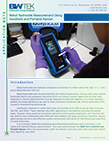
Metal Hydroxide Measurement Using Handheld and Portable Raman
It is a common belief that identifying and differentiating different metal hydroxides is not viable with handheld Raman spectrometers. This study demonstrates that B&W Tek’s Handheld and Portable Raman with a low wavenumber cutoff can identify commonly used metal hydroxides (NaOH, KOH, Mg(OH)2, and LiOH).
Read the Full Application Note
Read the Full Application Note
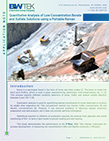
Quantitative Analysis of Low Concentration Borate and Sulfate Solutions using a Portable Raman
This application note demonstrates how to use a gravimetric analysis for measuring desired constituents in mixed chemicals or solution. The conventional method of monitoring H3BO3 concentration and Na2SO4 concentrations will be used here, too!
Read the Full Application Note
Read the Full Application Note
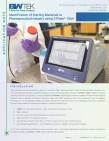
Identification of Starting Materials in Pharmaceutical industry using STRam®-1064
100% starting materials identification testing is one of the FDA’s directives as per 211.84 for FDA regulated industries such as Pharmaceutical, Vaccines, Cosmetics, Tobacco, Animal veterinary products, Food, etc. STRam®-1064 is a Raman analyzer uniquely suited to measure samples through thick packaging materials such as plastics, multilayer kraft paper sacks, and HDPE containers, and a long wavelength laser to suppress fluorescence.
Read the Full Application Note
Read the Full Application Note
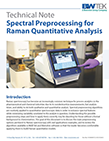
Spectral Preprocessing for Raman Quantitative Analysis
Raman spectroscopy has become an increasingly common technique for process analytics in the pharmaceutical and chemical industries due to its nondestructive measurements, fast analysis times, and ability to do both qualitative and quantitative analysis. In this technical note, we discuss preprocessing options when working with this chemometric data so that the reader becomes comfortable applying them to build Raman quantitative models.
Read the Full Application Note
Read the Full Application Note
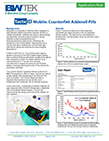
TacticID Mobile: Counterfeit Adderall Pills
In March 2021 the U.S. DEA issued a warning for the New England region stating that counterfeit Adderall pills manufactured to appear the same as real Adderall tablets while containing the highly addictive drug methamphetamine were being circulated throughout New Hampshire. In this case study, a suspected counterfeit Adderall pill was measured with a TacticID Mobile and a traditional 785-nm handheld Raman system.
Read the Full Application Note
Read the Full Application Note
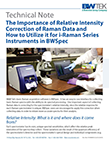
The Importance of Relative Intensity Correction of Raman Data and How to Utilize it for i-Raman Series Instruments in BWSpec
An important aspect of collecting Raman data to make it comparable across instruments is correcting for the spectrometer’s relative intensity, since the relative response for each Raman spectrometer is unique. This technical note explains the relative intensity correction, and how it is applied to portable Raman data collected in the BWSpec software during the data collection, or subsequently.
Read the Full Application Note
Read the Full Application Note
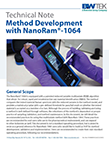
Method Development with NanoRam®-1064
In this technical app note, we detail recommended practices for using the patented reduced variable multivariate algorithm
that allows for robust, rapid and nondestructive raw material identification with NanoRam-1064 handheld Raman analyzer.
Read the Full Application Note
Read the Full Application Note
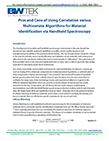
Pros and Cons of Using Correlation versus Multivariate Algorithms for Material ID via Handheld Spectroscopy
The economic and technical benefits of handheld Raman have been well discussed in open literature, but one area of confusion is in regards to the different statistical algorithms used for on board analysis of spectra and its results. In this article, we will discuss the two most common mathematical representations: Hit Quality Index (HQI) and significance level (p-value).
Read the Full Application Note
Read the Full Application Note
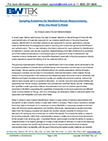
Sampling Guidelines for Handheld Raman Measurements; What You Need To Know
When it comes to rapid material identification, it is necessary to ensure flexibility in measuring samples for the best data with minimal sample preparation and handling. This application note explores sampling techniques that provide a high return on investment (ROI) without introducing complexity to the incoming material inspection and receiving process.
Read the Full Application Note
Read the Full Application Note
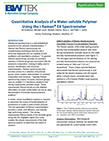
Quantitative Analysis of a Water-soluble Polymer Using the i-Raman EX Spectrometer
Vibrational spectroscopy is a well-established, powerful tool for polymer characterization. In this application note, we’ll explore how aqueous based water-soluble polymers(10-20% solids) can be rapidly and easily measured using the i-Raman EX portable Raman spectrometer.
Read the Full Application Note
Read the Full Application Note
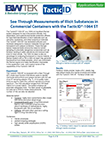
See-Through Measurements of Illicit Substances in Commercial Containers with the TacticID®-1064 ST
In this application note, we’ll explore some of the capabilities of the TacticID-1064 ST handheld Raman system and how it can be used to measure and identify illicit substances through both transparent and opaque containers without fluorescence issues that generally associated with 785 nm Raman systems.
Read the Full Application Note
Read the Full Application Note
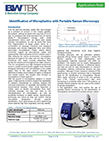
Identification of Microplastics with Portable Raman Microscopy
With the growth of microplastics research in recent years, it has become crucial to expand the capabilities of research laboratories to routinely analyze the chemical composition of candidate microplastics from environmental samples. Spectroscopic techniques are critical as they can confirm manual microplastic designation through polymer identification. In this application note, we’ll explore the use of portable Raman microscopy for the identification of microplastics recovered from surface estuary waters.
Read the Full Application Note
Read the Full Application Note
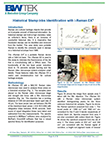
Historical Stamp Inks Identification with i-Raman EX®
This app note details how the i-Raman EX portable Raman spectrometer was utilized to identify colorants used in stamps on a historical envelope from 1885 while maintaining sample integrity
Read the Full Application Note
Read the Full Application Note
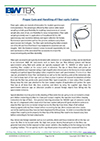
Proper Care and Handling of Fiber-optic Cables
This app note discusses the proper care and maintenance required for fiber optic cable sampling accessories to ensure measurement quality and fiber durability.
Read the full application note
Read the full application note
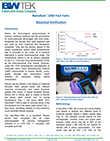
NanoRam®-1064 Fast Facts: Botanical Verification
This app note demonstrates the effectiveness of utilizing the NanoRam-1064 for analyzing and identifying botanical ingredients while minimizing fluorescence to provide accurate results.
Read the Full Application Note
Read the Full Application Note
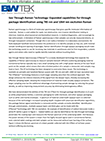
See Through Raman Technology: Expanded capabilities for through package identification using 785 nm and 1064 nm excitation Raman
This app note discusses how B&W Tek's STRaman technology expands the capability of Raman spectroscopy to measure samples beneath diffusely scattering packaging material.
Read the Full Application Note
Read the Full Application Note
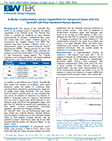
A-Mode: Customizable Library Capabilities for Advanced Users with the TacticID®-GP Plus Handheld Raman System
This app note discusses the modes of operation and library capabilities for the TacticID product family, including an A mode for advanced users to customize their individual library spectra for spectral search range and hit quality index (HQI) threshold
Read the Full Application Note
Read the Full Application Note
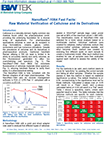
NanoRam®-1064 Fast Facts: Raw Material Verification of Cellulose and its Derivatives
This app note demonstrates how the NanoRam-1064 accurately identifies and verifies cellulose materials used frequently in raw material pharmaceutical settings by minimizing fluorescence
Read the Full Application Note
Read the Full Application Note
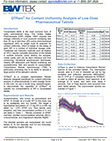
QTRam® for Content Uniformity Analysis of Low-Dose Pharmaceutical Tablets
In this app note, acetaminophen is used to demonstrate the capability of the QTRam compact transmission Raman analyzer to quantify low concentrations of API in compressed tablets.
Read the Full Application Note
Read the Full Application Note

Micro-Raman Spectroscopy in Thin Section Analysis of Rock Mineralogy
This app note by Peter Muller describes his work with micro-Raman spectroscopy for mineral identification in polished rock thin sections using a B&W Tek i-Raman® Plus portable Raman system
Read the Full App note
Read the Full App note
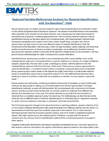
Reduced Variable Multivariate Analysis for Material Identification with the NanoRam®-1064
This app note describes a new reduced variable multivariate (RVM) algorithm implemented on the NanoRam-1064 that gives it robust methodologies for rapid, nondestructive sample verification of darker materials and those that exhibit strong fluorescence.
Read the Full Application Note
Read the Full Application Note
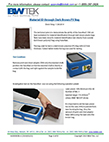
Material ID through Dark Brown PV Bag
This technical note is to demonstrate the ability of the NanoRam® (785 nm laser excitation) for material identification through dark brown plastic bags. Tests have been done for material identification test directly from outside dark brown polyvinyl bag using NanoRam.
Read the full application note
Read the full application note
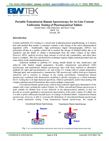
Portable Transmission Raman Spectroscopy for At-Line Content Uniformity Testing of Pharmaceutical Tablets
Content uniformity (CU) testing is a crucial task in pharmaceutical manufacturing, as it ensures that each product that reaches a consumer contains a safe dosage of the active pharmaceutical ingredient (API). Transmission Raman spectroscopy is quickly emerging as a valued technique for CU testing due to its high chemical specificity with complex pharmaceutical formulations that contain multiple components.
Read the full application note
Read the full application note
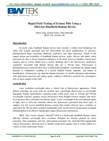
Rapid Field Testing of Ecstasy Pills Using a 1064-nm Handheld Raman Device
Brightly-colored street samples such as ecstasy tablets pose a serious challenge due to the fluorescence interference commonly associated with Raman devices that use a 785-nm laser. For this reason, handheld Raman systems that contain 1064-nm laser excitation, as opposed to the 785-nm laser excitation traditionally used, are the newest advancement in Raman instrumentation in an effort to significantly reduce fluorescence interference.
Read the full application note
Read the full application note

Portable Raman for Measurement of Crystalline Silica Aerosol
Researchers at the Centers for Disease Control in Cincinnati, Ohio have shown the feasibility or near real-time measurements of aerosol particles at levels close to hazardous limits. They developed calibration curves and detection levels of the alpha quartz from the Raman signal as collected using the portable i-Raman Plus system.
Click here to read the full study
Click here to read the full study

STRaman™ Technology: Raman for See Through Material Identification
In this application note, a new Raman system design is presented that expands the applicability of Raman to See Through diffusely scattering media such as opaque packaging materials, as well as to measure the Raman spectrum and identify thermolabile, photolabile, or heterogeneous samples.
Download the full application note
Download the full application note
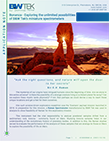
Bonanza – Exploring the unlimited possibilities of B&W Tek’s miniature spectrometers
In preparation for a science-driven exploratory expedition was the ‘Exomars’ payload mission launched in 2018, a Raman Spectrometer manufactured by B&W Tek was used in analysis to show feasibility of Raman for this exploratory mission. This instrument had the vital responsibility to analyze powdered samples drilled from a sedimentary rock, breccia - commonly found on Mars.
Download Full Application Note
Download Full Application Note
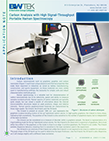
Carbon Analysis with High Signal -Throughput | Portable Raman Spectroscopy
Raman spectroscopy is a valuable tool for characterization of carbon nanomaterials due to its selectivity, speed, and ability to measure samples nondestructively. Raman spectra of carbon materials are typically quite simple but can reveal a wealth of information about the internal microcrystalline structures based on peak positions, shape, and relative intensity.
Download the full application note
Download the full application note

The Application of the B&W Tek i-Spec Visible-NIR Spectrometer to Condition Monitoring of Oils and Lubricants: Example Hydraulic Fluids
Optical spectral measurements have been used for decades for the identification, characterization and quality assessment of oils and lubricants. The most common spectroscopic method, which has been well documented since the 1960s, is infrared spectroscopy, today used in the form of FTIR. In this application note, the i-Spec system is considered as a complementary tool to FTIR for condition monitoring of fluids outside of the traditional laboratory environment.
Read the full app note
Read the full app note

Portable Raman spectroscopy for an in-situ monitoring the ripening of tomato fruits
Ripening is one of the most important transformations that fruits and vegetables suffer, from an unripe to a ripe stage. In this study, it was followed up and analyzed the variations in the composition of tomato fruits at different ripening stages (green or unripe, orange or middle ripe, red or ripe and brown or overripe). The results obtained from the Raman measurements carried out showed a change in the composition of tomato fruits in the transit from green to brown.
Read the full application note
Read the full application note

Raman identification of cuneiform tablet pigments: emphasis and colour technology in ancient Mesopotamia
Cuneiform tablets tell the life and culture of Sumerian people in a sort of black and white tale because of the binary engraving technique. In this application note, non-destructive micro-Raman spectroscopy was utilized to analyze both the surface and the depth of the engraving signs and to determine if and to what purpose colors were applied in the studied Sumerian cuneiform tablets.
Read the full application note
Read the full application note

Portable Raman Spectroscopy in Forensics: Explosive Residues and Inflammable Liquids
Spectroscopic techniques are showing an increase in their potential applications in the forensic field due to the novel instrumentation which is being developed to be faster, more sensitive, more compact and portable and more flexible to analyse a wider variety of substances. In this application note, demanding and challenging applications in which an in‐situ standoff identification of samples might be advisable, were tested using Raman spectroscopy.
Read the full application note
Read the full application note

Reverse Intensity Correction for Raman Spectral Library Search
In this research article published in Applied Spectroscopy by Dr. Jun Zhao, Dr. Jack Zhou and Kristen Frano, they present a method that improves Raman library search performance for CCD instruments such as the NanoRam for more consistent HQI matches and improved library specificity, enhancing NanoRam performance for rapid identification use.
Read the full application note
Read the full application note

The Advantages of a Compact, Thermoelectrically-Cooled Fiber Optic Spectrometer for Raman and Fluorescence Spectroscopy
Compact spectrometers using array detectors and fiber optic light inputs are being utilized for a wide variety of spectroscopic applications.
Download Application Note

The Use of Raman Spectroscopy in Cancer Diagnostics
Both Raman spectroscopy and surface enhanced Raman spectroscopy (SERS) are proving to be invaluable tools in the field of biomedical research and clinical diagnostics. The robust, compact, fit-for-purpose Raman spectrometer designs are appropriate for use in surgical procedures to help surgeons assess tumors and allow rapid decisions to be made. The two biomedical applications highlighted in this review demonstrate how this SERS technique can be an important part of the medical toolbox
Read The Full Application Note
Read The Full Application Note

Lithium alloy measurement using B&W Tek’s NanoLIBS®-Q Handheld LIBS Elemental Analyzer
Lithium alloys, like Li-Al and Li-Mg alloys, are widely used in various industries. For lithium alloy manufacturers, detecting the concentrations of Al in Li-Al alloy and Mg in Li-Mg alloy is a necessary step in daily production and the QC process. B&W Tek’s NanoLIBS-Q handheld LIBS elemental analyzer provides a quick and easy solution to lithium alloy manufacturers to make measurements on the production floor.
Download the Application Note
Download the Application Note

Quantification of Urea in Ethanol by Raman Spectroscopy
In this application note, we present the quantification of the concentration of urea in ethanol by Raman Spectroscopy and we show how this method can be employed for determining the percentage of urea in a solid inclusion compound with stearic acid.
Download Application Note
Download Application Note

Fast and Selective Detection of Trigonelline, a Coffee Quality Marker, Using a Portable Raman Spectrometer
Quality control in the food industry is a key issue that requires rapid, efficient and selective methods that could discriminate the products, detect fraudulent or accidental adulterations, and identify the content of some biomarkers within a particular process of storage conditions. For this, Raman spectroscopy in conjunction with the optical properties of metallic nanostructures is a powerful technique that can be implemented in food analysis.
Download the Application Note
Download the Application Note

La espectroscopia Raman de mano-Una herramienta para reducir los riesgos en materiales utilizados en la fabricación
Con el riesgo creciente de impactos negativos en la calidad, existe la necesidad de un control regulador más estricto para garantizar la seguridad y la calidad de todos los materiales en la cadena de producción de una compañía farmacéutica con el fin de mitigar los riesgos; desde la materia prima entrante a la supervisión en tiempo real y durante las etapas críticas de la producción, hasta la inspección final del producto.
Lea la nota de aplicación completa
Lea la nota de aplicación completa

Raman Spectroscopy as a Tool for Process Analytical Technology
Raman spectroscopy is a well-suited spectroscopic technique for process development and control within development laboratories in chemical, pharmaceutical and other industries. This article demonstrates the utility of portable Raman spectroscopy as a simple and versatile tool for process analytical technology (PAT) in regards to raw material identification, in-situ monitoring of reactions in developing active pharmaceutical ingredients (APIs), and for real-time process monitoring.
Download the Application Note
Download the Application Note

Rapid Detection of the Low Dose API in Xanax Using Surface-Enhanced Raman Spectroscopy for Anti-Counterfeiting Purposes
The emergence of counterfeit prescription drugs has become a concern for the pharmaceutical industry. Counterfeit drugs are fraudulently manufactured and/or mislabeled to appear genuine. Due to the prevalence of these potentially dangerous counterfeits, it is necessary to develop a technique that can quickly confirm the identity of a suspected fake drug.
Download Application Note
Download Application Note

Rapid Analysis of Textiles with Portable Near Infrared Spectroscopy
NIR spectroscopy is a green technology that is non-destructive, efficient, rapid and accurate, with no sample preparation needed. When applied to the rapid identification of textiles, it removes the need for strong chemical solvents to dissolve the samples, meaning that there is no destructive sampling, greater safety for the operators, and no hazardous materials output into the environment.
Download Application Note
Download Application Note

Raw Material Identification through Multiple Polyethylene Bags
Raman technology is known for its fast speed and convenience for material identification and verification since Raman measurements can be conducted through transparent containers without any sample preparation. This technical note showcases the NanoRam handheld Raman spectrometer for raw material identification through multiple polyethylene (PE) bags.
Download Application Note
Download Application Note

Using Handheld Raman Spectroscopy To Reduce Risks In Materials Used For Manufacturing
This article presents the discussion on minimizing risks in quality of pharmaceutical manufacturing using Raman spectroscopy, which provides a rapid, reliable means of testing in many different environments in manufacturing, including the loading dock.
Download Application Note
Download Application Note

Combined Electrochemical Raman Spectroscopy for Process Characterization
Raman spectroscopy has proven to be an effective technology to characterize conductive polymers in combination with conventional electrochemical experiments. Coupled with electrochemical techniques, it allows in-situ characterization of the molecular structure changes of polymers during the course of electrochemical reactions.
Download Application Note
Download Application Note

Low Frequency Raman Spectroscopy
Raman Spectroscopy is an advantageous analytical tool that allows for the measurement of molecular structure and identifying chemical composition of materials based on the rotational and vibrational modes of a molecule. Access to lower frequency regions with Raman spectroscopy provides key information for applications in protein characterization, polymorph detection and identification, along with material phase and structure determination.
Download Application Note
Download Application Note

Raman Spectroscopy in Archaeological Studies
Chemical identification is an important part of the study of archaeological artefacts and artworks. This information can be obtained through nondestructive Raman analysis directly within the environment in which the artefacts are discovered. This information is extremely helpful in forming the basis of identifying pigments, dyes and paints used; thus indicating when and how a piece was made, giving insight into the time period of creation, and suggesting the authenticity of the object.
Download Application Note
Download Application Note

Portable Raman Instrumentation for SERS Applications
Surface enhanced Raman spectroscopy (SERS) has attracted significant attention in recent years due to rising interest in trace level detection in the field for applications such as environmental safety, food safety, and homeland security. The development of SERS technology is being driven by a need to overcome the technical barrier of the lower detection limit with Raman spectroscopy as well as the need for trace level detection of explosive compounds, chemical residuals, and biomedical diagnostics.
Download Application Note
Download Application Note

Portable Raman Spectroscopy for the Study of Polymorphs and Monitoring Polymorphic Transitions
Raman spectroscopy is used for material characterization by analyzing molecular or crystal symmetrical vibrations and rotations that are excited by a laser, and exhibit vibrations specific to the molecular bonds and crystal arrangements in the molecules. Due to its excellent spectral specificity, Raman technology is a valuable tool in distinguishing different polymorphs, and can also be used in the study of solvate forms.
Download Application Note
Download Application Note

Carbon Black At-line Characterization Using a Portable Raman Spectrometer
Carbon black is a form of amorphous carbon. It is mainly used as reinforcement filler in automobile tires and other rubber products, but is also used in pigments, paint, and carbon paper. Raman spectroscopy is a very effective analytical technology to characterize carbon materials. The fast characterization of carbon black material using Raman spectroscopy is discussed here to demonstrate that Raman technology is well suited for carbon black material characterization.
Download Application Note
Download Application Note

Choosing the Most Suitable Laser Wavelength For Your Raman Application
Dispersive Raman spectroscopy has increasingly been implemented for material identification due to its portability and sampling flexibility. When choosing a Raman instrument, a primary concern is the wavelength of the laser that is integrated into the Raman spectrometer system. Though the Raman shift of any material is only related to the material’s specific chemical structure and is independent of the excitation wavelength, different wavelengths have their strengths and weaknesses.
Download Application Note
B&W Tek Raman Solution Suite for Forensics Applications
Law enforcement personnel, laboratory technicians, crime scene investigators and many others face a significant challenge for identification of materials in a forensic investigation, as they must routinely examine materials such as gun powder residue, drugs of abuse, hair sampling, chemical precursors and more. In these cases, technologies such as Raman spectroscopy can be successfully used for cursory identification of multiple forensic sample types either directly in the field or in the lab.
Download Full Application Note
Identification of Forensic Fabrics Using a Portable Raman Spectrometer
At a crime scene, a police officer collects a fiber sample that may prove to be invaluable evidence in identifying a criminal or exonerating an innocent person. In this study, we show how Raman spectroscopy, which has been studied extensively for forensic fiber analysis, is a perfect fit for this scenario because of the high selectivity of Raman signatures, non-destruction nature of the test, and the ability to conduct the analysis without any sample preparation.
Download Application Note
B&W Tek TacticID for Narcotics Identification
Law enforcement officers responsible for reducing narcotics trafficking and drug abuse face more challenges than ever before. New drugs are appearing at an alarming rate and the global drug problem is spiraling out of control. Raman technology can provide quick and accurate sample processing for law enforcement to reduce time and cost while protecting officers and citizens alike.
Download Application Note
Fast Ingredient Analysis of Edible Oils Using a Portable Raman Spectrometer
Edible oils are not only a major source of nutrition but also a key basic material in the food industry. Vegetable oils are increasingly important because of their high content in mono- and polyunsaturated fatty acids in comparison with animal fats. In this application note, the main ingredients of olive oil, camellia oil, arachis oil, sunflower seed oil, and colza oil are analyzed using a portable Raman spectrometer combined with chemometrics software from B&W Tek.
Download Application Note
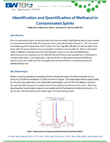
Identification and Quantification of Methanol in Contaminated Spirits
Over the past several years, an alarming trend has become evident, highlighting serious issues related to contaminated alcohol within the European Union. In September 2012 the Czech Republic officially banned the sale of hard liquor after 20 people died from the consumption of methanol-laced spirits. After an exhaustive study, the Czech Republic turned to the use of portable Raman spectroscopy to quantify methanol in contaminated spirits.
Download Application Note
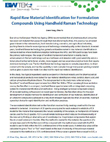
Rapid Raw Material Identification for Formulation Compounds Using Handheld Raman Technology
Ever since the European Medicines Agency (EMA) recommended that all pharmaceutical companies test every raw material that passes through their manufacturing facilities, this practice has attracted great interest in the nutraceuticals, food manufacturing, cosmetics, and agricultural industries, pushing them to strive for more rigorous and technology-oriented quality control standards.
Download Application Note

Quantitative Analysis of Solutions Using a High Resolution Portable Raman Spectrometer
Raman is a well-developed spectroscopic tool for molecular identification and is widely accepted for qualitative analysis where it can provide rapid identification of materials, often at their point of use or delivery. Due to the high resolution that Raman can provide, it is also used for structural elucidation as well as quantitative analysis.
Download Application Note
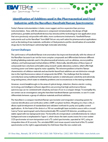
Cost & Benefits of Handheld Raman for Quality Control Testing of Incoming Raw Materials in the Pharmaceutical Supply Chain
Competition in the pharmaceutical industry is driving drug companies to spread their manufacturing operations around the globe. Unfortunately, production delocalization results in more testing of the incoming raw materials for quality assurance, product safety and regulatory purposes, which results in an increased cost of doing business.
Download Application Note
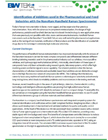
Identification of Additives used in Pharmaceutical & Food with the NanoRam Handheld Raman Spectrometer
Today’s Raman instrumentation is faster, more rugged, and less expensive than previous instrumentation. Now, with the advances in component miniaturization, the design of high performance, portable and handheld devices has introduced the technology to new application areas that were previously not possible with older, more cumbersome instruments.
Download Application Note
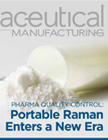
Pharma Quality Control: Portable Raman Enters a New Era
Portable Raman spectroscopic devices have become part
and parcel of every pharmaceutical manufacturer’s QA/
QC toolbox. These mobile devices are being embraced for
an increasing range of applications, from raw materials
identification to API classification to counterfeit detection.
They may soon become more prevalent even as a means
of characterizing finished-dosage forms.
Download Application Note

NanoRam: Ideally-suited for the Inspection of Raw Materials and Chemicals Used in the Pharmaceutical industry
In recent years, Raman Spectroscopy has gained a reputation in market segments that require the rapid identification of unknown compounds, such as the testing of chemicals, measurement of pharmaceutical ingredients and characterization of polymers.
Download Application Note

NanoRam: Full Regulatory Compliance for the Inspection of Raw Materials & Chemicals in the Pharmaceutical Industry
One of the most critical factors in developing and marketing pharmaceutical products and dietary supplements today is ensuring that the analytical methodology used for analysis will produce high quality, valid data.
Download Application Note"

Lymph-node Test Shows Clinical Potential
A revolutionary method for identifying breast cancer in lymph nodes using Raman spectroscopy is being tested by researchers and surgeons at a UK hospital.
Download Application Note

In-situ Monitoring of a Moisture-Induced Polymorphic Transition using Raman Spectroscopy
Raman spectroscopy is a widely used physical characterization technique in the pharmaceutical industry. In particular, Raman spectroscopy is used to identify different polymorphic forms.
Download Application Note

High Performance Diode Laser Enables Low-Cost Raman Spectroscopy
A narrow linewidth, wavelength stabilized diode laser has been developed for low-cost Raman spectroscopy applications.
Download Application Note

Fundamentals of Raman Spectroscopy
Raman spectroscopy is a nondestructive and highly versatile technique for analysis of chemicals, both organic and inorganic. It is used in industry, bioscience, medical diagnosis, forensics, and many other areas.
Download Application Note

The Benefits of Raman Spectroscopy for the Identification and Characterization of Polymers
The benefits of Raman spectroscopy are well recognized for the molecular identification of unknown samples and being used routinely in various applications areas.
Download Application Note

Quantitative Prediction of Tobacco Components using Near-Infrared Diffuse Reflectance Spectroscopy
Recently, near-infrared (NIR) spectroscopy has been explored as a complementary analytical technique alongside automatic analyzers for large-volume quality control analysis of tobacco. In this study, we demonstrate the ability to accurately predict the amount of nicotine, sugar, and chloride in tobacco using the i-Spec® Plus, a portable diffuse reflectance NIR spectrometer with on-board chemometric software from B&W Tek.
Download the full application note
Download the full application note







